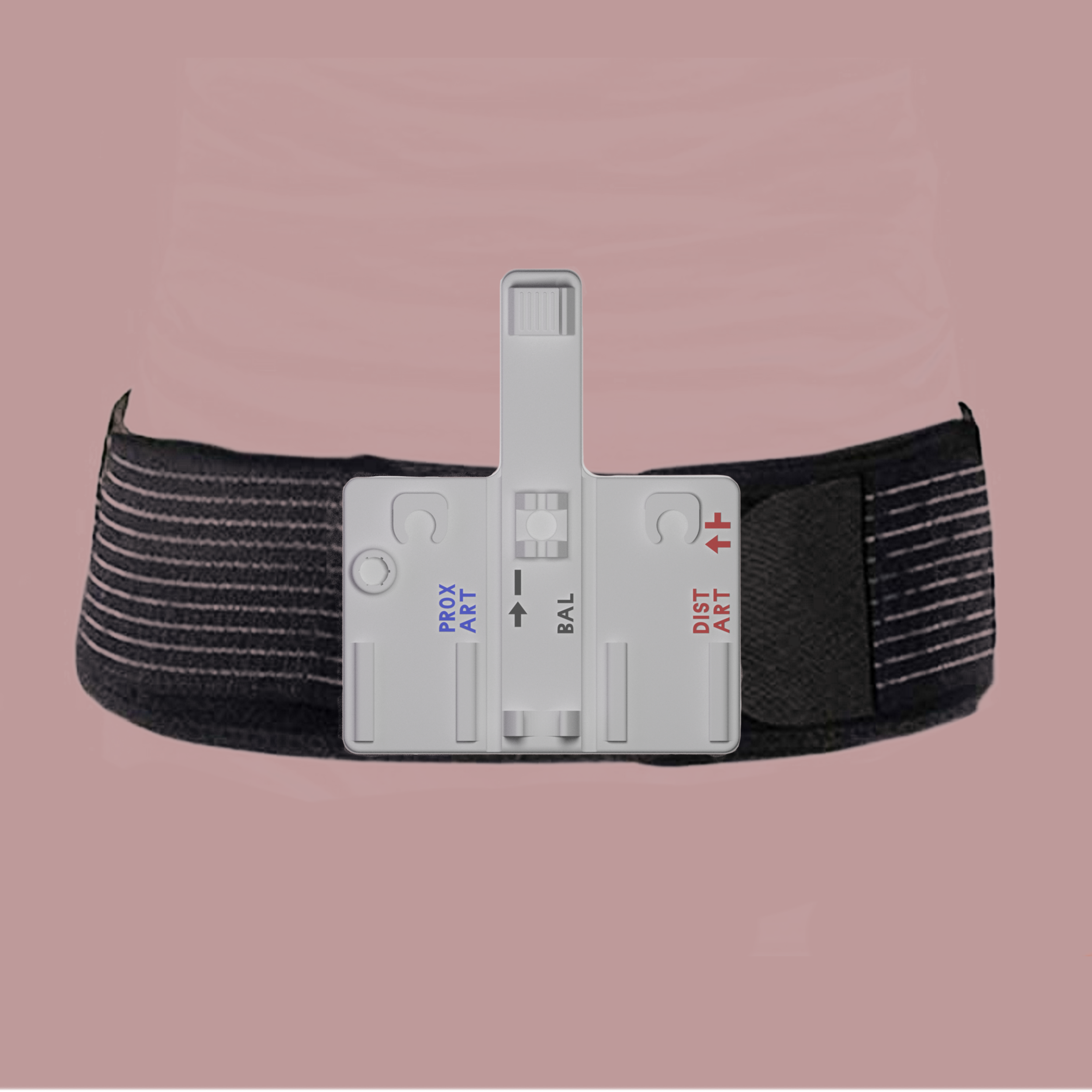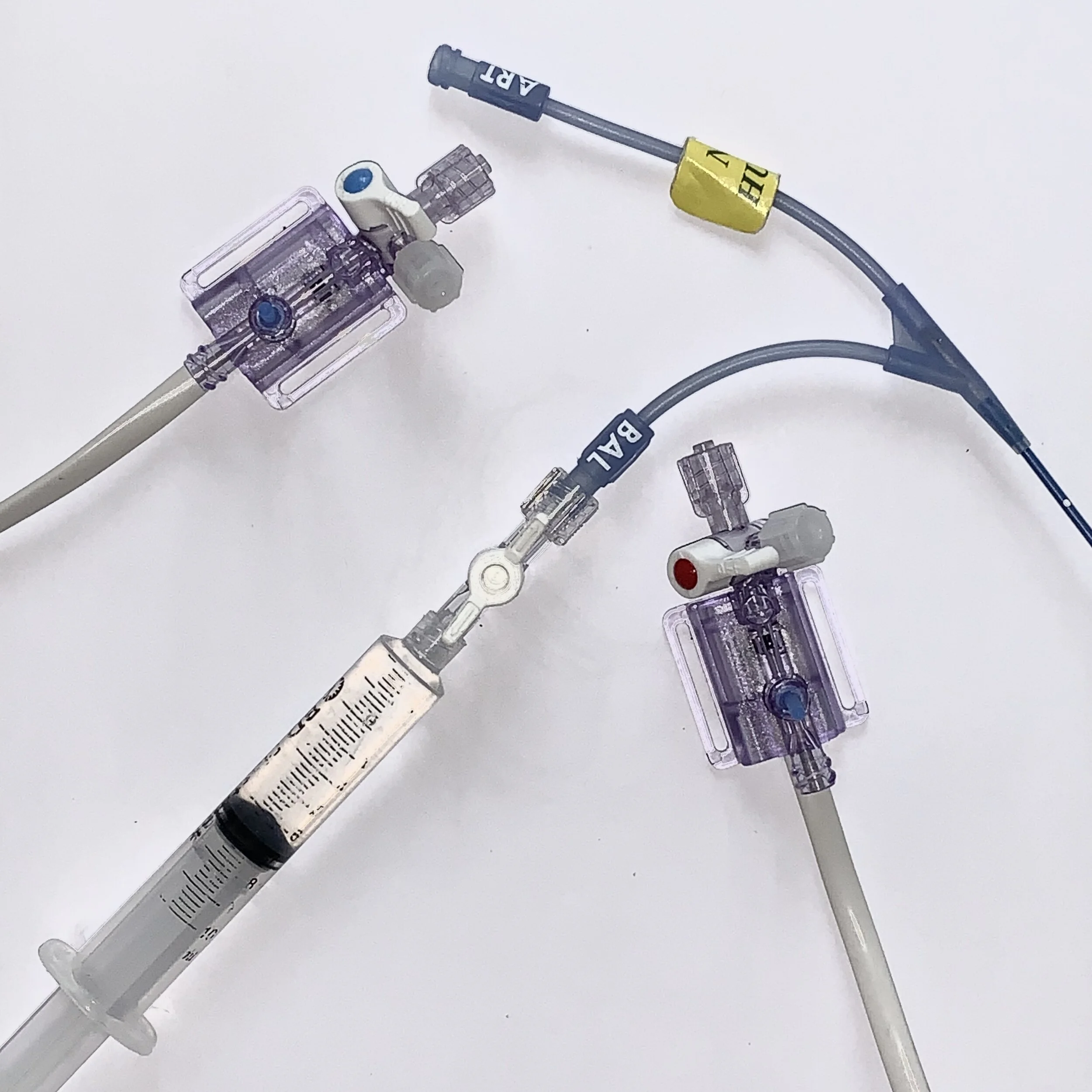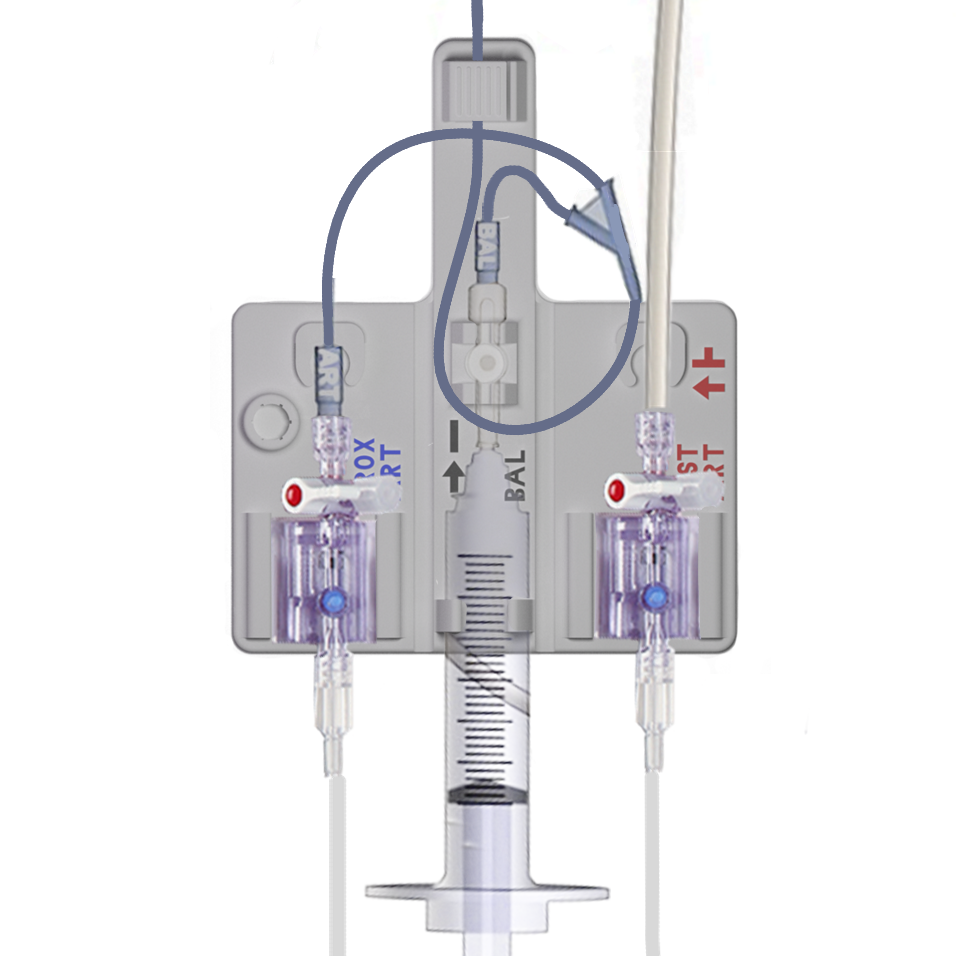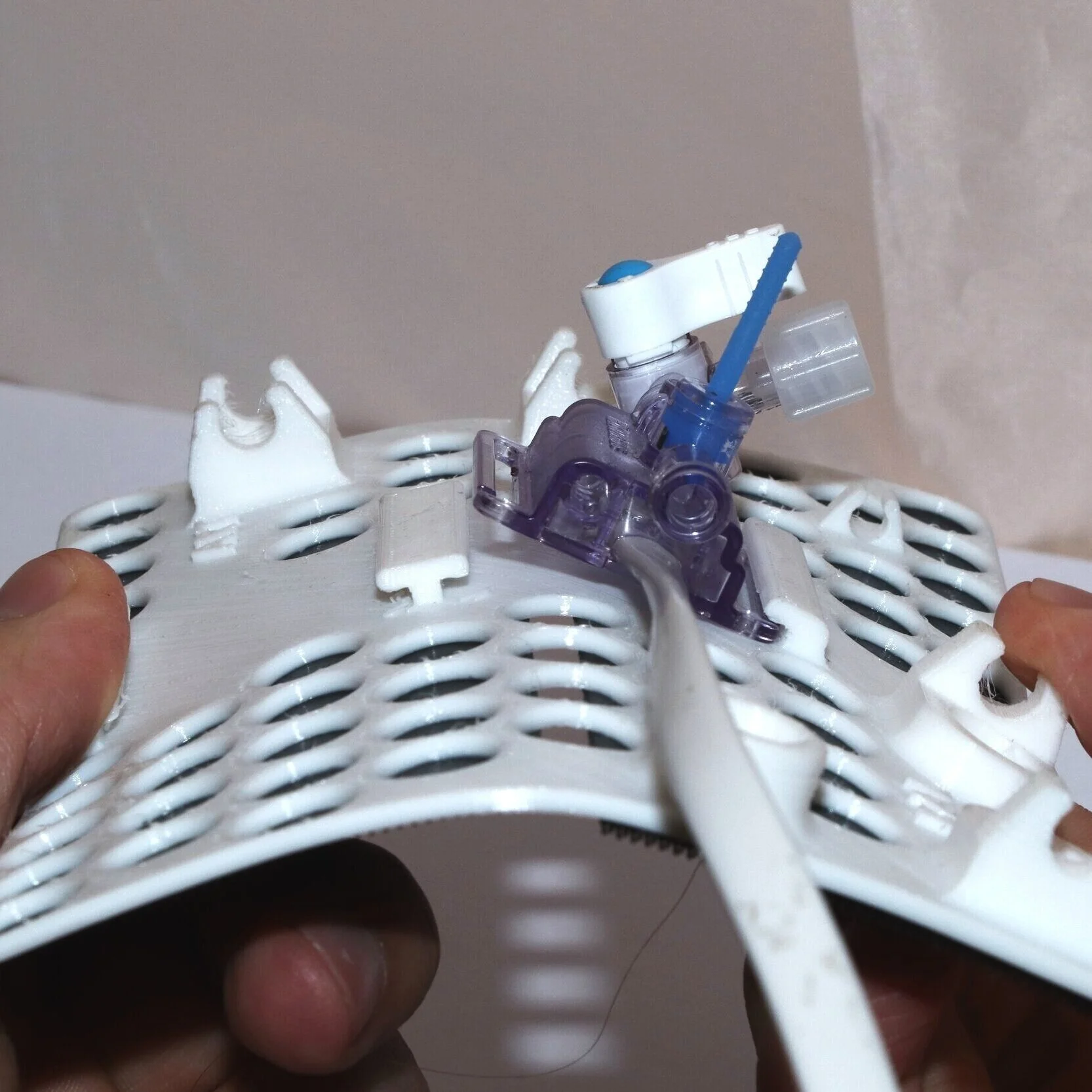
Royal London Hospital REBOA Device
This open-brief project was developed through collaboration with the London Air Ambulance (LAA) paramedic team at The Royal London Hospital. The project concerns the REBOA (Resuscitative Endovascular Balloon Occlusion of the Aorta) procedure, a complex multi-stage method of preventing excessive blood loss from haemorrhages. Whilst traditionally performed in the operating theatre, The Royal London Hospital has pioneered REBOA for pre-hospital care as recently as 2014. As such, the new context environment renders much of the REBOA equipment unsuitable for use. This device makes existing equipment more fit-for-purpose, replacing current practices with a user design-led solution to aid the paramedic in the procedure.
Project Type: Medical
Skills & Knowledge: Design process, Rapid prototyping, Testing, Client relationships, Interaction design, User-centred design, CAD, Presenting, Report Writing
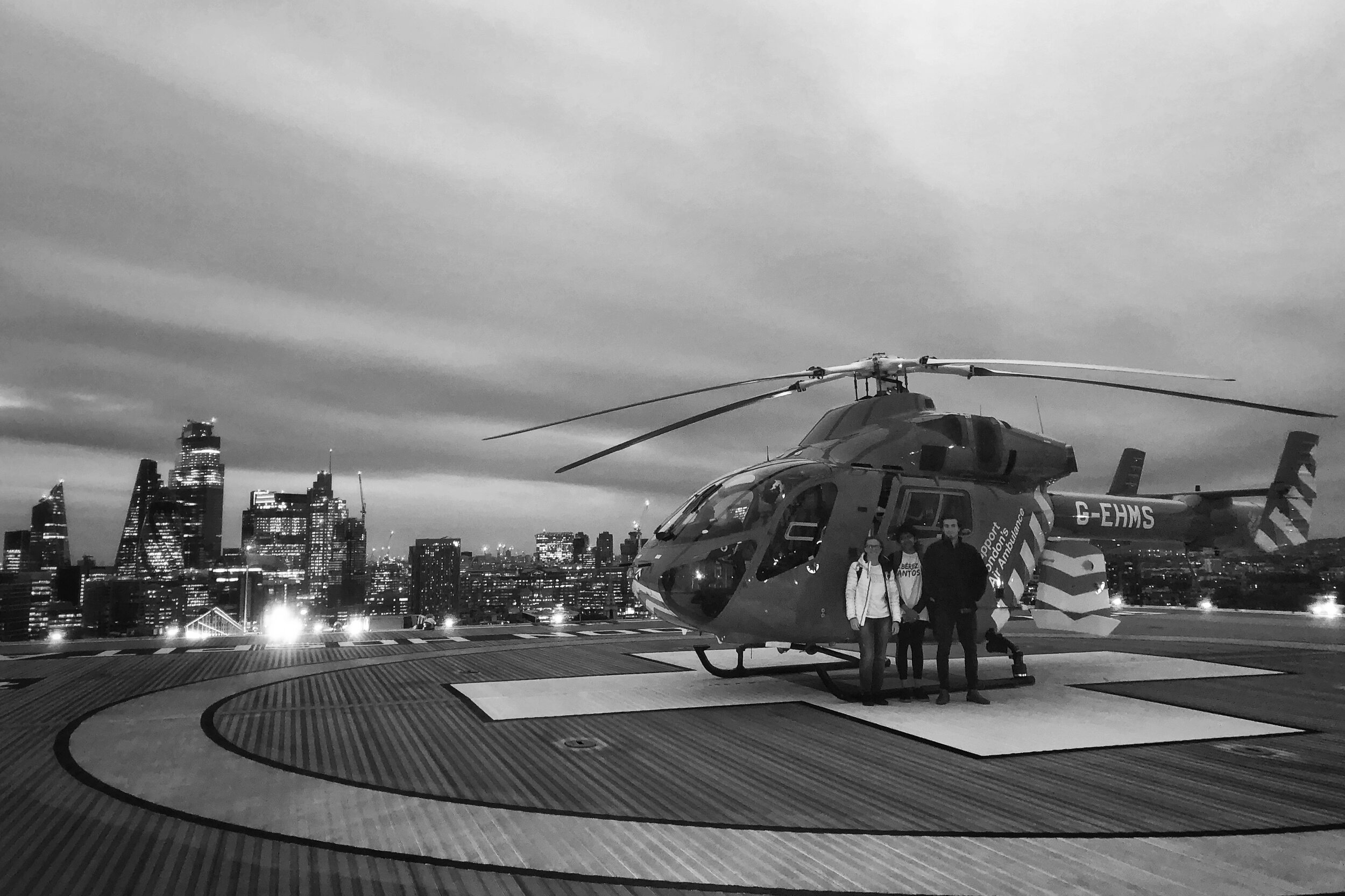
“Design a solution to reduce cognitive load and stress by making REBOA equipment more fit-for-purpose in the pre-hospital use environment”

Complex medical use environments require strict user-centred design
The team granted me unique access to training exercises and courses to observe how the paramedics deliver pre-hospital care. To design an effective and truly user-centred product, this project would call on my knowledge of interaction design, requiring extensive prototyping and testing to achieve maximum usability in the intricate medical context.
In the complex pre-hospital environment, a paramedic benefits from anything that can make their life easier. In making existing equipment more fit-for-purpose, the device is designed to reduce cognitive load and stress.
The product is a centralised unit attached to the upper thigh. This replaces the practice of taping equipment to the body, providing a more secure method of fastening equipment in all weather conditions.
Traditionally, equipment such as pressure transducers, vital for assessing the success of the procedure, are taped to the body in locations where the tape will stick...
This presents the user with several issues. For one, the tape does not adhere well in the rain. If the transducers were to come off, the procedure has to be repeated, losing precious time. Additionally, the equipment is hard to locate on the body in a high-stress environment.
Centralising equipment in one location solves this. It is also an opportunity to improve the user experience by arranging the medical equipment logically and providing the user with clear and concise visual cues to refer to in a high-stress situation.
Key Features.
Equipment is slotted securely to the device, replacing the practice of using masking tape.
Allows current equipment to be used, eliminating the need for new equipment and training.
Grooves run along the length of the device to allow it to form to the patient’s leg.
All operable equipment is centralised in one location making it easy to find and operate.
Designed with portability in mind to be easily incorporated into existing kit bags.
The Catheter Clamp replaces Tegaderm Dressing by securing at the desired depth and guiding the Catheter into the Femoral Artery.
Implicit and explicit directional cues aid the user through colour coding and natural mapping.
The arrangement of transducer and stopcock slots reflect how equipment is used in practice.
The device is constructed from TPU for its flexibility and ease of manufacture. TPU is also highly durable and sterilisable.
Attaches to the body with a Velcro strap for quick and easy set-up, keeping the device securely in place.
Rounded edges ensure the device can be cleaned and sterilized thoroughly after each use.
Full in-depth report available upon request.




